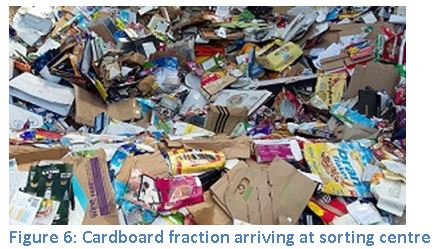
Merthyr Tydfil, United Kingdom
Click to see more about:
- National and Regional System
- Waste Collection Scheme
- Information and Communication
- Evolution Paper & Cardboard Waste collected
- Paper and Cardboard Waste Treatment
- Costs and Revenues, Resources
- Stakeholder Satisfaction
- Main Problems/Challenges
Save
Save
Save
Save
Save
Save
Save
More information: Stephen Thomas
Merthyr Tydfil County Borough Council
stephen.thomas@merthyr.gov.uk
1 Welsh Assembly Government (2010): Towards Zero Waste. One Wales: One Planet. The Overarching Waste Strategy. Document for Wales. June 2010. p. 46.
2 Welsh Assembly Government (2010): Towards Zero Waste. One Wales: One Planet. The Overarching Waste Strategy. Document for Wales. June 2010. p. 16: “Following discussions with the European Commission the UK has decided that it has been usina too narrow definition of municipal waste (only waste collected by local authorities). It is planned to change this to include all waste from households, and all wastes of a similar nature and composition to wastes from households, whoever collects it. As a result, the definition will be extended to cover most commercial waste. This decision was made after the draft of Towards Zero Waste was launched for consultation. The term ’municipal’ in the consultation applied only to municipal wastes collected by local authorities. This strategy document now refers to ‘municipal waste collected by local authorities’, and to ‘commercial waste’ for the municipal waste not collected by local authorities. Final decisions on terminology will be decided following consultation.”
3 Calculated according to the exchange rate on 31.12.2015: 1 GBP = 1.356 EUR
4 The effective annual council tax charge for waste services for a Band D property is £39.5.
5 £2,644,863 = €3,603,626; £249,637 = €340,130
6 The questionnaire was filled out by 15 citizens from Merthyr Tydfil.
7 The most obvious explanation for these complaints is the recent change of the WM system. The recent communication plan of MTCBC (Merthyr Tydfill County Borough Council) states that “At the start of the service change public perception of how successful the change would be was very low (…)”, see MTCBC (2016): Waste Services Communications Plan 2016-17, Introduction (draft version).
8 Merthyr Tydfill County Borough Council (2016): Waste Services Communications Plan 2016-17. (draft version)
Save
Save
Save
Save
Save
Save
Save
Save
Save
Save
Save
Save
Save
Save
Save
Save
Save
Save
Save
Save
Save
Save
Save
Save
Save
Save
Save
Save
Save
Save
Save
Save
Save




 The new collection service has been launched in June 2015. As public resistance was expected a comprehensive communication plan has been set up to overcome potential difficulties. The key aims of the Communication Plan were to ensure that as many people as possible are informed about the change, to limit any disruption to collection services, to limit the amount of negative press generated about the reduction in refuse capacity and changes to methods of collecting recycling, and to encourage maximum levels of recycling/composting. The campaign was
The new collection service has been launched in June 2015. As public resistance was expected a comprehensive communication plan has been set up to overcome potential difficulties. The key aims of the Communication Plan were to ensure that as many people as possible are informed about the change, to limit any disruption to collection services, to limit the amount of negative press generated about the reduction in refuse capacity and changes to methods of collecting recycling, and to encourage maximum levels of recycling/composting. The campaign was



 cardboard available on the territory is not recycled/ recovered.
cardboard available on the territory is not recycled/ recovered.


 In the questionnaires the only issue the citizens identified is the unpleasant surrounding of containers and littering. This is also mentioned by the employees of the WM department as well as by the waste management company. As there are no Bring Banks in Merthyr Tydfil this refers to the door-to-door collection.
In the questionnaires the only issue the citizens identified is the unpleasant surrounding of containers and littering. This is also mentioned by the employees of the WM department as well as by the waste management company. As there are no Bring Banks in Merthyr Tydfil this refers to the door-to-door collection.